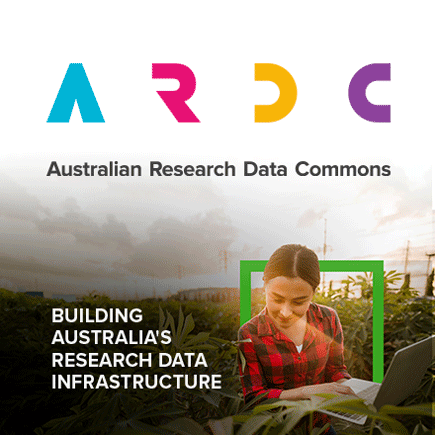Brief description
The monthly blended ground cover product is a spatially explicit raster product that shows the proportion of bare ground, green and non-green ground cover at medium resolution (30 m per-pixel) for each calendar month across Queensland from 2017 to present. It is derived directly from both the Landsat-based fractional cover product and the Sentinel-2-based fractional cover product by Queensland's Remote Sensing Centre.
A 3 band (byte) image is produced:
band 1 - bare ground fraction (in percent),
band 2 - green vegetation fraction (in percent),
band 3 - non-green vegetation fraction (in percent).
The no data value is 255.
This product is derived from the Monthly blended fractional cover - Landsat and Sentinel-2, JRSRP algorithm Version 3.0, Queensland coverage
Notes
Supplemental InformationData are available as cloud optimised GeoTIFF (COG) files. COG files are easier and more efficient for users to access data corresponding to particular areas of interest without the need to download the data first.
Lineage
Summary of processing:Landsat 8/Sentinel-2 surface reflectance data > multiple single-date fractional cover datasets > monthly composite of fractional cover > Landsat-based seasonal persistent green > monthly composite of ground cover.
Data Creation
Fractional Cover Model:
The bare soil, green vegetation and non-green vegetation endmembers for the blended Landsat 8 and Sentinel-2 are calculated using models developed for seasonal fractional cover across Australia.
When viewed from above, as by the satellite, mid- and over-storey vegetation obscures the ground layer fractions (bare ground, green ground cover and dry ground cover). The monthly fractional cover product, from which this ground cover product is derived, does not distinguish between these vegetation layers. As such, a high estimate in the green fraction may be due to green vegetation in any of the vegetation layers. To produce the ground cover product, the fractional cover product is adjusted using an estimate of the proportion of the pixel obscured by mid- and over-story foliage. This estimate of cover is an estimate of the combined persistent dry and persistent green layers. That is, all vegetation in the mid- and upper- stories. The mid and upper storage foliage is effectively removed from the estimates of cover and the ground cover estimate is therefore based only on the proportion of ground that was visible by the satellite.
We assume that fractional cover fractions in each vegetation layer are independent, that is that the presence of mid and over-storey vegetation does not influence the distribution of the ground cover fractions. The algorithm to create the ground cover layer relies on two satellite products (seasonal fractional cover and seasonal persistent green), as well as an estimate of persistent dry derived from field data.
A simplified description of the algorithm follows:
1. Base imagery required is monthly fractional cover from both Landsat and Sentinel-2, and seasonal persistent green product derived from Landsat.
2. Estimate of persistent dry is derived from field data relationship
3. The ‘gap-fraction’ is calculated (total pixel area - pixel area composed of persistent dry - pixel area composed of persistent green)
4. Adjust all three fractions for each pixel using persistent dry and persistent green estimates
Notes
CreditWe at TERN acknowledge the Traditional Owners and Custodians throughout Australia, New Zealand and all nations. We honour their profound connections to land, water, biodiversity and culture and pay our respects to their Elders past, present and emerging.
This dataset was produced by the Joint Remote Sensing Research Program using data sourced from US Geological Survey and the European Space Agency (ESA) Copernicus Sentinel Program.
This product captures variability in ground cover at monthly time scales, forming a consistent time series from 2017 - present. The most recent two years are interim products, as there is a two year lag in finalising the persistent green product. The monthly ground cover product is useful for investigating more rapid changes than the 3-monthly seasonal products, for changes in ground cover and analysing regional comparisons. For applications that focus on all vegetation, the fractional cover product may be more suitable.
This product is based upon the JRSRP Fractional Cover 3.0 algorithm, which benefited from additional field validation and a new machine learning approach.
Data Quality Assessment Scope
local :
dataset
Landsat 8 imagery rated as less than 80% cloud cover was downloaded from the USGS EarthExplorer website as level L1T imagery. Sentinel-2A data was downloaded from the ESA as Level 1C (version 02.04 system). Masks for cloud, cloud shadow, topographic shadow and water were applied as described in Flood (2017). <br>
The monthly fractional cover model output was compared to roughly 4000 field sites.
Created: 2022-01-01
Issued: 2024-09-25
Modified: 2024-09-25
Data time period: 2017-01-01
text: Queensland
User Contributed Tags
Login to tag this record with meaningful keywords to make it easier to discover
 Point-of-truth metadata URL
Point-of-truth metadata URL
Flood, N. (2013). Seasonal Composite Landsat TM/ETM+ Images Using the Medoid (a Multi-Dimensional Median). Remote Sensing, 5(12), 6481–6500. https://doi.org/10.3390/rs5126481
doi :
https://doi.org/10.3390/rs5126481![]()
Flood, N., Danaher, T., Gill, T., & Gillingham, S. (2013). An Operational Scheme for Deriving Standardised Surface Reflectance from Landsat TM/ETM+ and SPOT HRG Imagery for Eastern Australia. Remote Sensing, 5(1), 83–109. https://doi.org/10.3390/rs5010083
doi :
https://doi.org/10.3390/rs5010083![]()
Muir, J., Schmidt, M., Tindall, D., Trevithick, R., Scarth, P., & Stewart, J. B. (2011). Field measurement of fractional ground cover: A technical handbook supporting ground cover monitoring for Australia.
uri :
https://www.researchgate.net/publication/236022381_Field_measurement_of_fractional_ground_cover![]()
Trevithick, R., Scarth, P., Tindall, D., Denham, R. and Flood, N. (2014). Cover under trees: RP64G Synthesis Report. Department of Science, Information Technology, Innovation and the Arts. Brisbane.
- URI : geonetwork.tern.org.au/geonetwork/srv/eng/catalog.search#/metadata/95366f4c-3fd4-4900-a8c5-a6a286b30762

- global : 95366f4c-3fd4-4900-a8c5-a6a286b30762


